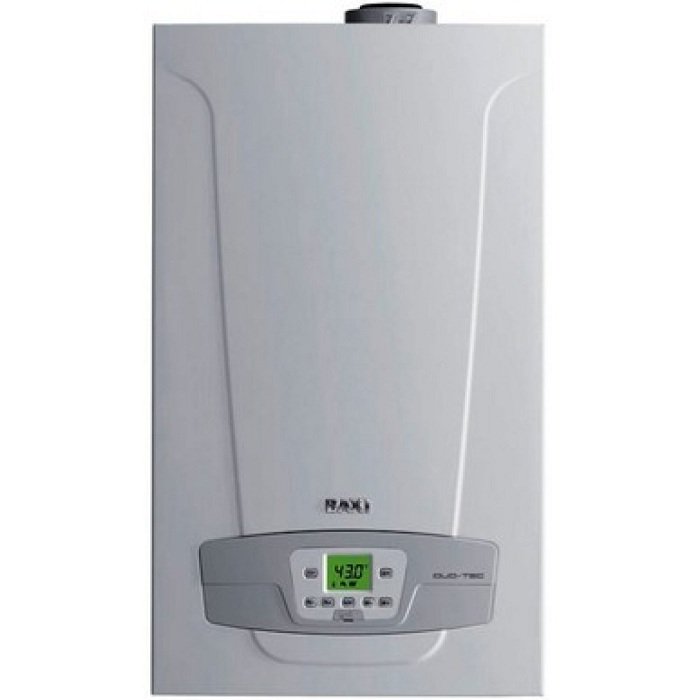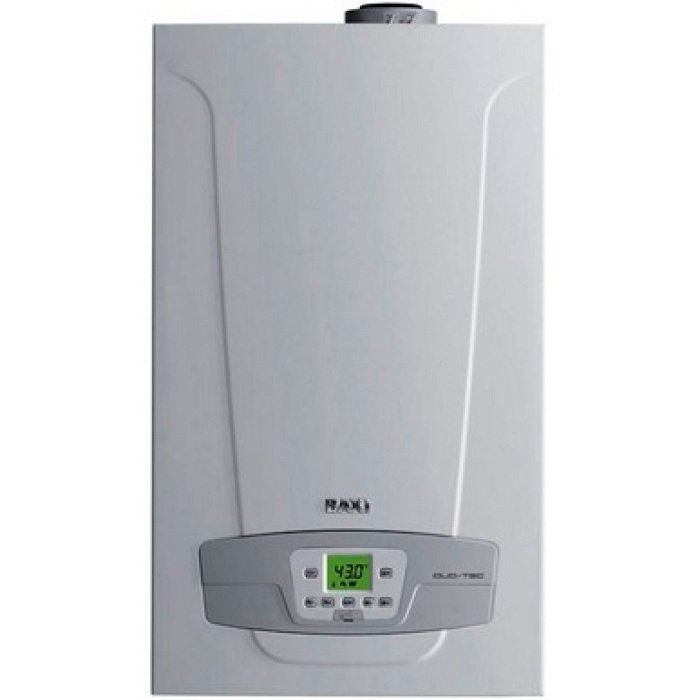Gas Boiler Baxi Luna Duo-Tec+ 24 Ga Condensing Complete With LPG Fume Exhaust Kit - New Erp
Gas Boiler Baxi Luna Duo-Tec+ 24 Ga Condensing Complete With LPG Fume Exhaust Kit - New Erp - Coaxial smoke kit is backordered and will ship as soon as it is back in stock.
Couldn't load pickup availability
How shipping works
How shipping works
Shipping costs vary depending on the weight and shipping method of your order. Our shipping services:
- Standard Shipping: Estimated delivery within 2 to 5 business days
- Premium Shipping: Guaranteed delivery within 24 business hours
- Premium Shipping + Home Delivery: Guaranteed delivery within 24 business hours
See the tables for standard shipping prices for Italy and the Minor Islands and Disadvantaged Areas.
For more details on Premium Shipping, please visit the Premium Shipping page.
Customer service
Customer service
Our customer service team is dedicated to providing support to our customers with any issues or questions they may have before or after purchasing our products.
Use the direct communication channel to speak with one of our representatives, or send us an email at one of the addresses listed on the contact us page.
Our customer service team is made up of highly qualified professionals who are always ready to help customers resolve any issue or answer any question quickly and efficiently. We are committed to ensuring maximum customer satisfaction and providing the highest quality after-sales service. So, if you need assistance, don't hesitate to contact us; we'll be happy to help in any way we can.
Description
Description
Technical features
- ErP energy efficiency class (heating and DHW): A
- Load profile: XL
- DHW nominal heat input kW 24.7
- Heating nominal heat input kW 20.6
- Sanitary nominal thermal power kW 24
- Energy efficiency (92/42/EEC) ****
- Efficiency at 100% Pn (80-60°C): 97.7%
- Efficiency at 100% Pn (50-30°C): 105.8%
- Expansion/pre-charge vessel capacity l/bar 8/0.8
- Sanitary water temperature adjustment °C 35-60
- Sanitary water production ∆T 25°C l/min 13.8
- Degree of protection: IPX5D
- NOx class (EN 483) 5
- Dimensions (h x w x d): 763 x 450 x 345 mm ; 38.5 kgs
- Power supply: LPG
To view more product information CLICK HERE
General characteristics
Luna Duo-Tec+
Wall mounted gas condensing boilers ideal for both new build and replacement
The new Duo-tec+ range of gas-fired condensing boilers has been specifically designed in compliance with the requirements of the Ecodesign and Labeling Directives, to make it particularly suitable both for new buildings and for replacing an old generator. In fact, in addition to the already known advantages of condensing technology such as high efficiency, energy saving and reduced polluting emissions, the new Duo-tec+ condensing boilers are characterized by:
- Complete range of models : heating only, with instantaneous DHW production, with integrated micro-storage tank, with integrated 40-litre storage tank. The range also includes the compact version (Compact+), the first Baxi condensing boiler in just 70 cm in height and 30 cm in depth.
- Digital control panel with backlit LCD display
-
Wide modulation range 1:7 the reduction of on/off cycles translates into significant benefits in terms of energy savings and lower emissions
- greater efficiency given by fewer starts and stops: with a high modulation ratio, the reduction of the continuous on/off cycles leads to a significant reduction in consumption (by 8-10%) and an equal reduction in polluting emissions
- adjustment of the thermal power produced to the power dissipated thus avoiding excessive overheating/cooling of the premises
The innovative GAC ( Gas Adaptive Control ) automatic combustion control system guarantees a wide modulation range up to 1:10: high efficiency and energy savings are ensured as the boiler is able to adjust the thermal power produced to the actual power dissipated from the building avoiding excessive heating/cooling of the building.
Characteristics:
- Wide modulation range up to 1:7 greater efficiency and silence
- GAC (gas adaptive control): automatic combustion control
- High efficiency circulation pump with total modulation
- Digital control panel with large backlit LCD display
- Arrangement for combination with the Baxi integrated solar system
- Ø50 mm exhaust pipe: solution for restoring flues - mod. 24 kW
ErP/EcoDesign – Mandatory labeling from September 2015

Why ErP (Energy related Products)?
To be placed on the EU market, a product must have the brand ![]() , or comply with all the European Directives applicable to it.
, or comply with all the European Directives applicable to it.
Which directives are affected?
How does the placing on the market take place?
Placing on the market is carried out by the manufacturer (or by the importer from outside the EU) when the product is made available for the first time on the EU market. This happens when ownership changes to a distributor (invoice).
What products can be sold?
All products with the CE mark placed on the market before 01/08 and 26/09 2015 are considered compliant and therefore salable until they run out. All products that will be placed on the market (sold) by the manufacturer/importer after these dates will have to comply with the new standards.
What is a product according to ErP (Ecodesign)?
A luminaire designed to operate at maximum efficiency with minimum environmental impact. To comply with this directive, the product must have Pn ≤ 400 kW and, as regards hot water tanks, a volume ≤ 2000 litres. Manufacturers are obliged to place only ErP-compliant products on the market with these deadlines:
- from 1 August 2015 only products equipped with high efficiency pump
- from 26 September 2015 only products that meet the minimum ErP efficiency requirements
Ecodesign defines the requirements that products must meet in order to be placed on the market, based on:
- Seasonal efficiency for heating and efficiency for DHW production based on the declared load profile
- Emissions (NOx values)
-
Maximum permissible noise level of hydronic heat pump outdoor units
What is a Combi product according to ErP?
What is a load profile in ACS?
Examples:
XL profile
XXL profile
What is the Energy Label?


Technical Data Sheet
Technical Data Sheet
- peso: 35.0 kg
- classe energetica produzione acs: A
- classe energetica riscaldamento: A
- gas: LPG
- marca: Baxi
- metri quadri : 120
- modello: CALD_289G
- potenza in kw: 24
- potenza nominale: 24
- superficie riscaldabile mq: 120





